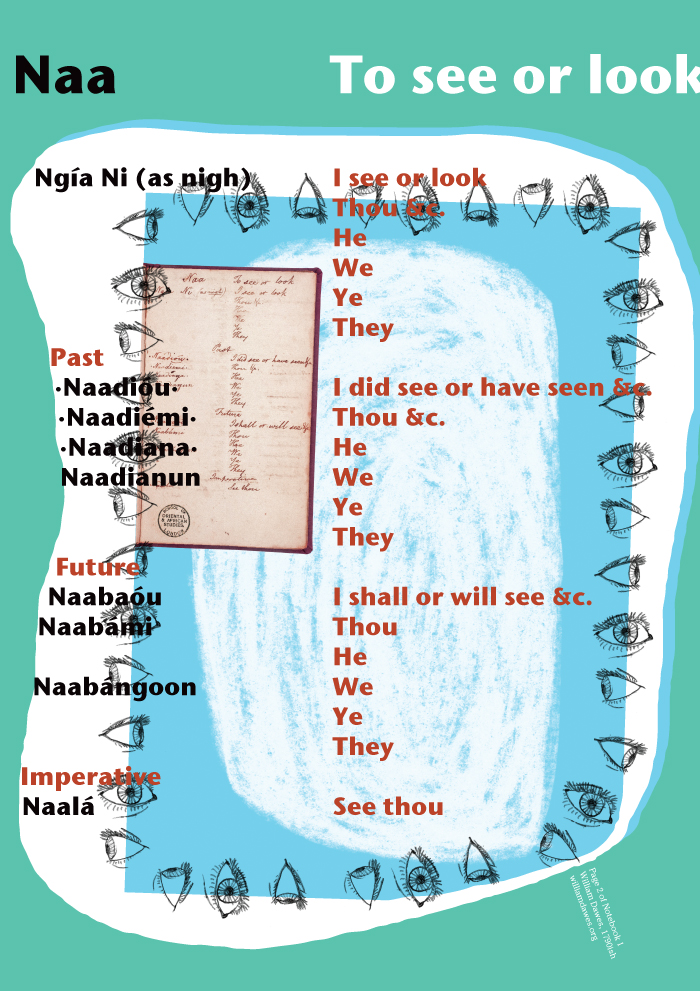
My Submission for the Australian Infront Virtual Response Competition.
It is based on a page from William Dawes’ notebooks from 1790, the first real documentation of the Aboriginal Language, Dharuk, from the Sydney area.
William Dawes had an incredibly interesting story, as I found on this amazing website. williamdawes.org
He came to Australia with the 1st Fleet as an astronomer, and ended up making the first serious attempt to document the native tongue in the form of 3 notebooks. Importantly, these also captured the sentiments of the Aboriginal people whose conversations he transcribed.
He was asked after some time in the service of the Governor Arthur Phillip to take part in a hunt to decapitate 10 Aboriginal men as revenge for the death of the Governor’s Gamekeeper. Dawes resisted but was eventually persuaded to join the pursuit. After the group returned unsuccessful he expressed his regret in participating and wouldn’t apologise to the Governor for this attitude, making him one of the first Europeans who stood in defence of Aboriginal interests. As a result, Dawes was returned to England, despite his great wish to remain in New South Wales.
He continued to undertake many honourable pursuits including setting up schools for the children of slaves in Antigua.
Whether William Dawes recognised it or not, I think that his documentation of the language would have played a major role in his moral objection. When you speak a foreign language you immediately have a cross cultural experience, and with these experiences you learn and show respect.
Pretty sure this isn’t a winning response, but it was an interesting theme to work with.
Naabangoon…